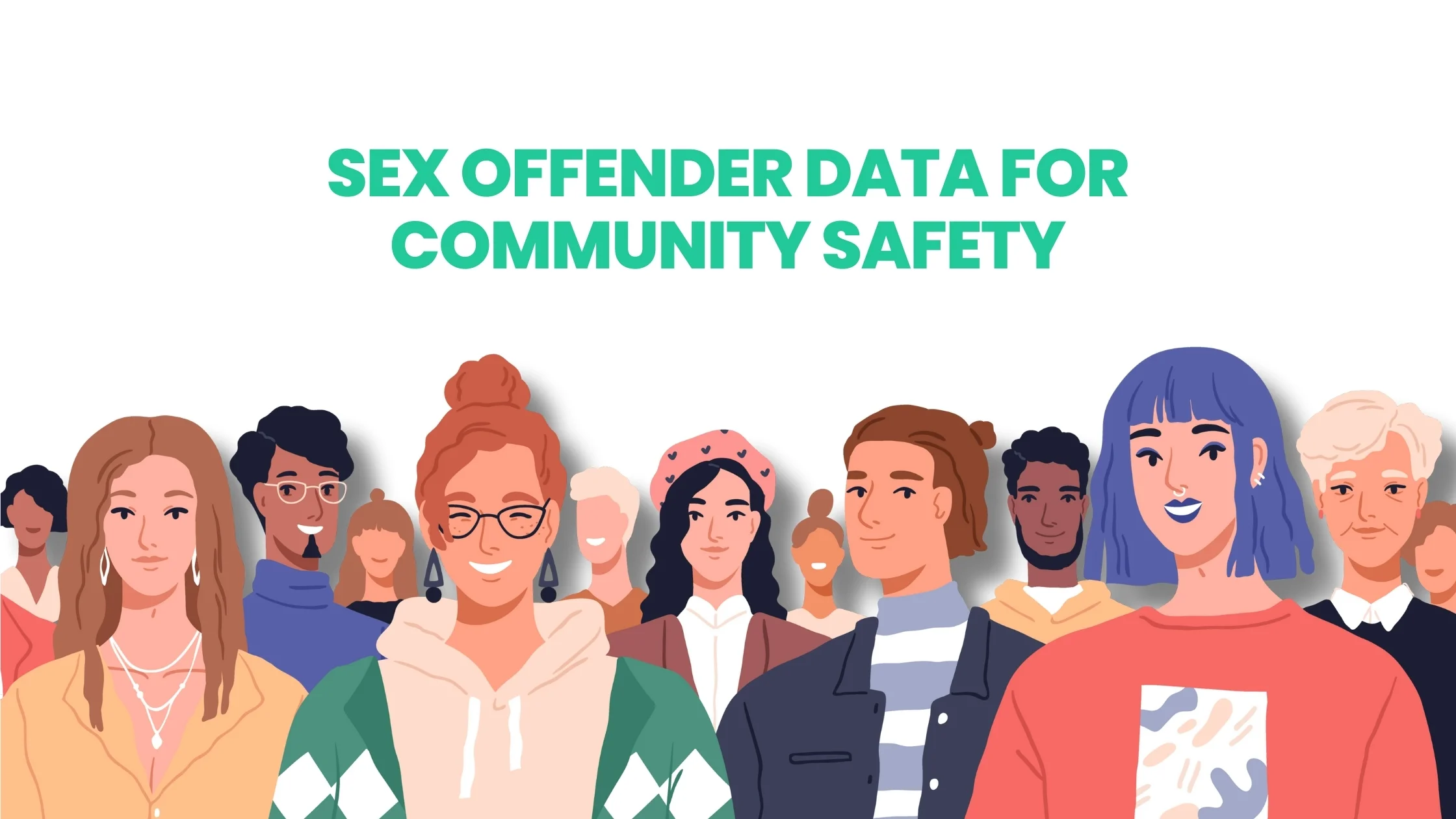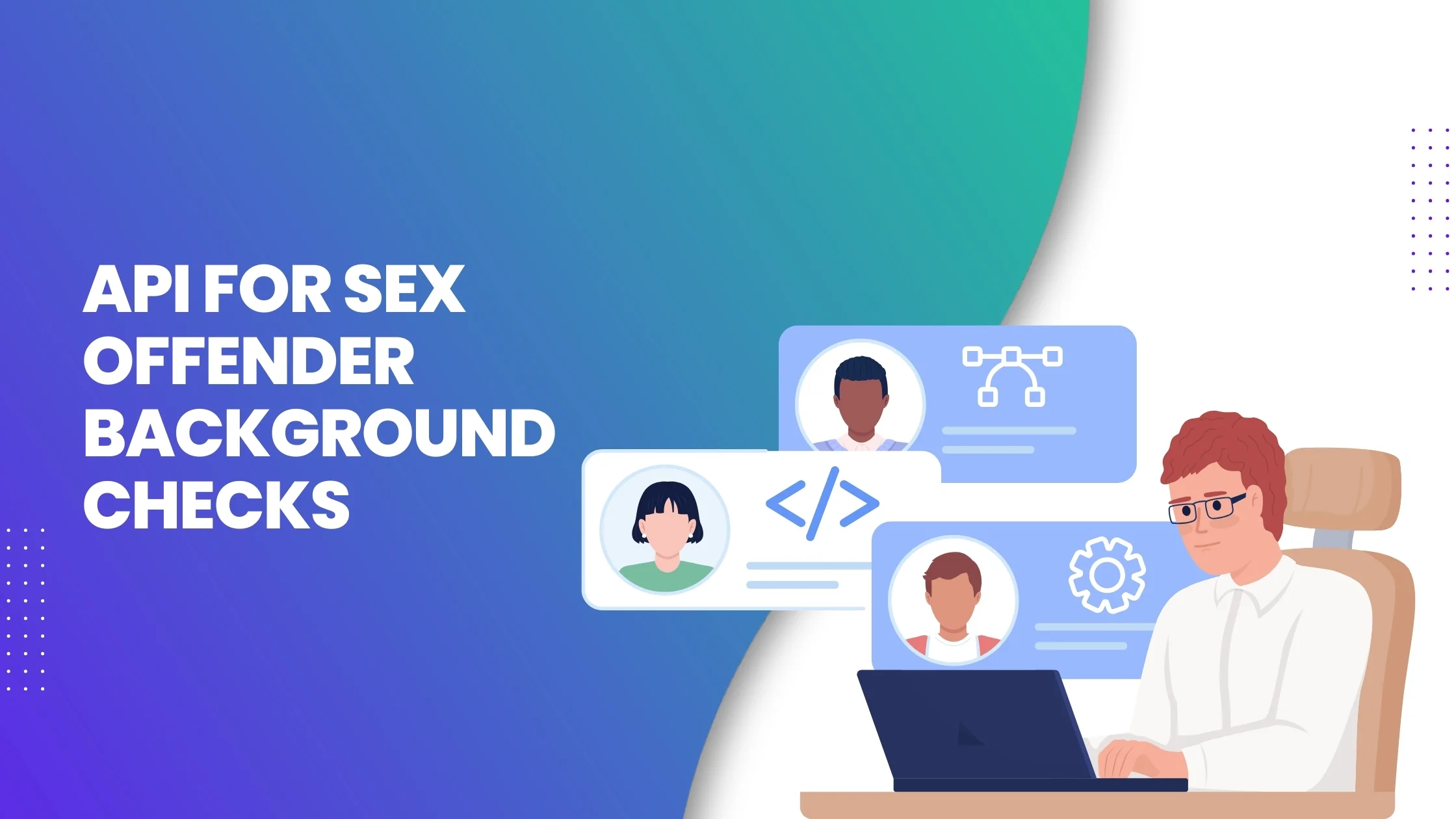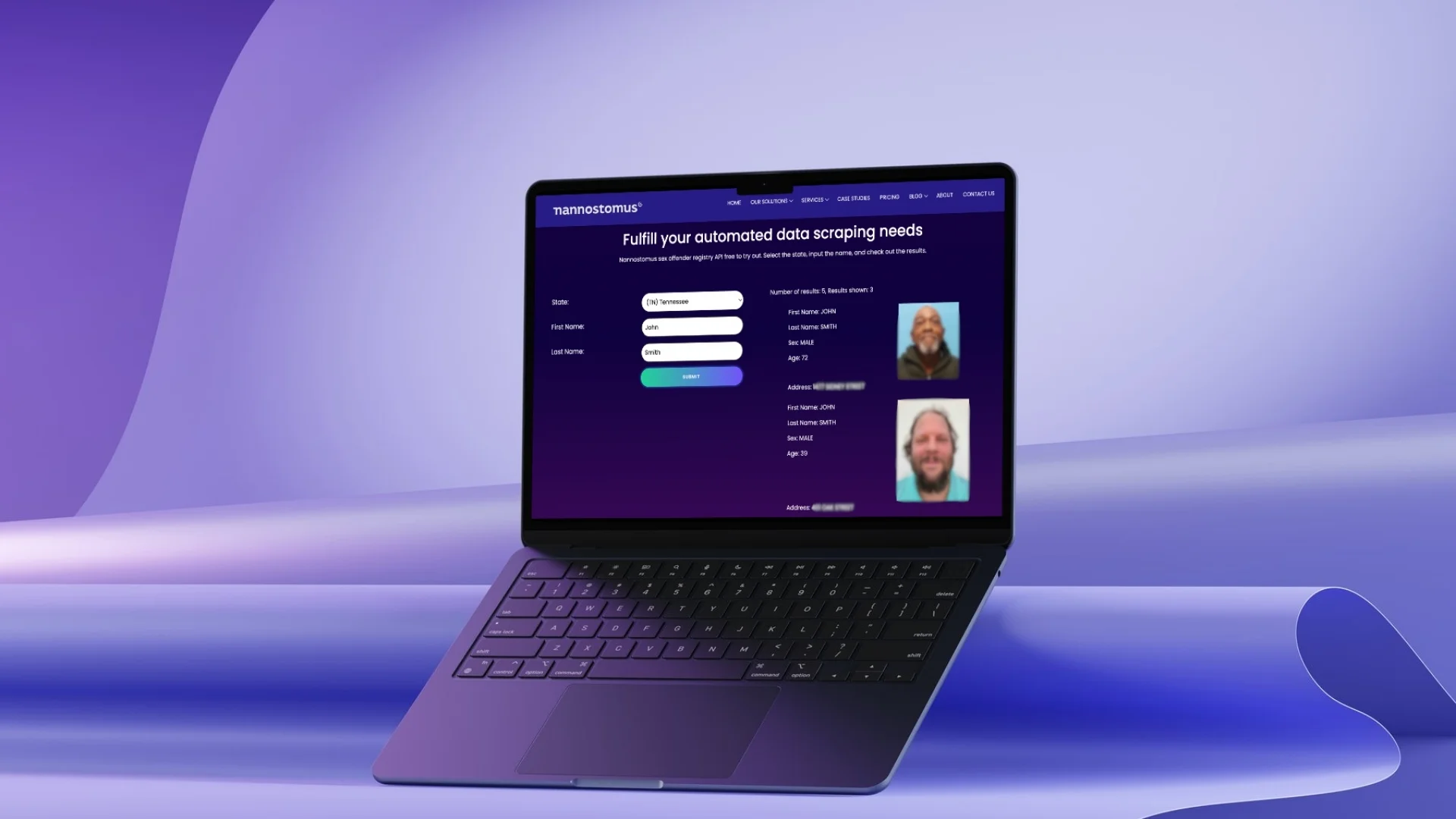Every 68 seconds, someone in the U.S. is sexually assaulted. Many offenders reoffend, sometimes within the same communities they once targeted.
While there are laws that allow you to locate registered sex offenders, not all communities have easy access to up-to-date data. Some areas lack enforcement, and in many cases, critical information is hard to get.
Communities have a responsibility to protect residents, especially children and vulnerable individuals. But how do you ensure safety if you don’t know who’s living nearby?
This article explains why tracking sexual perpetrators is crucial and how to locate sex offenders in my area.
The Reality of Sex Crimes in the U.S.
As of March 2025, there are 654,448 registered sex offenders across the United States (based on information we gathered). Texas and California have the highest number. Texas reports 69,447 offenders, and California follows closely with 67,827. On the other end of the spectrum, American Samoa and the U.S. Virgin Islands report significantly lower numbers, with 60 and 130 respectively. Among states, Vermont and Rhode Island have some of the lowest counts, at 1,351 and 1,370.
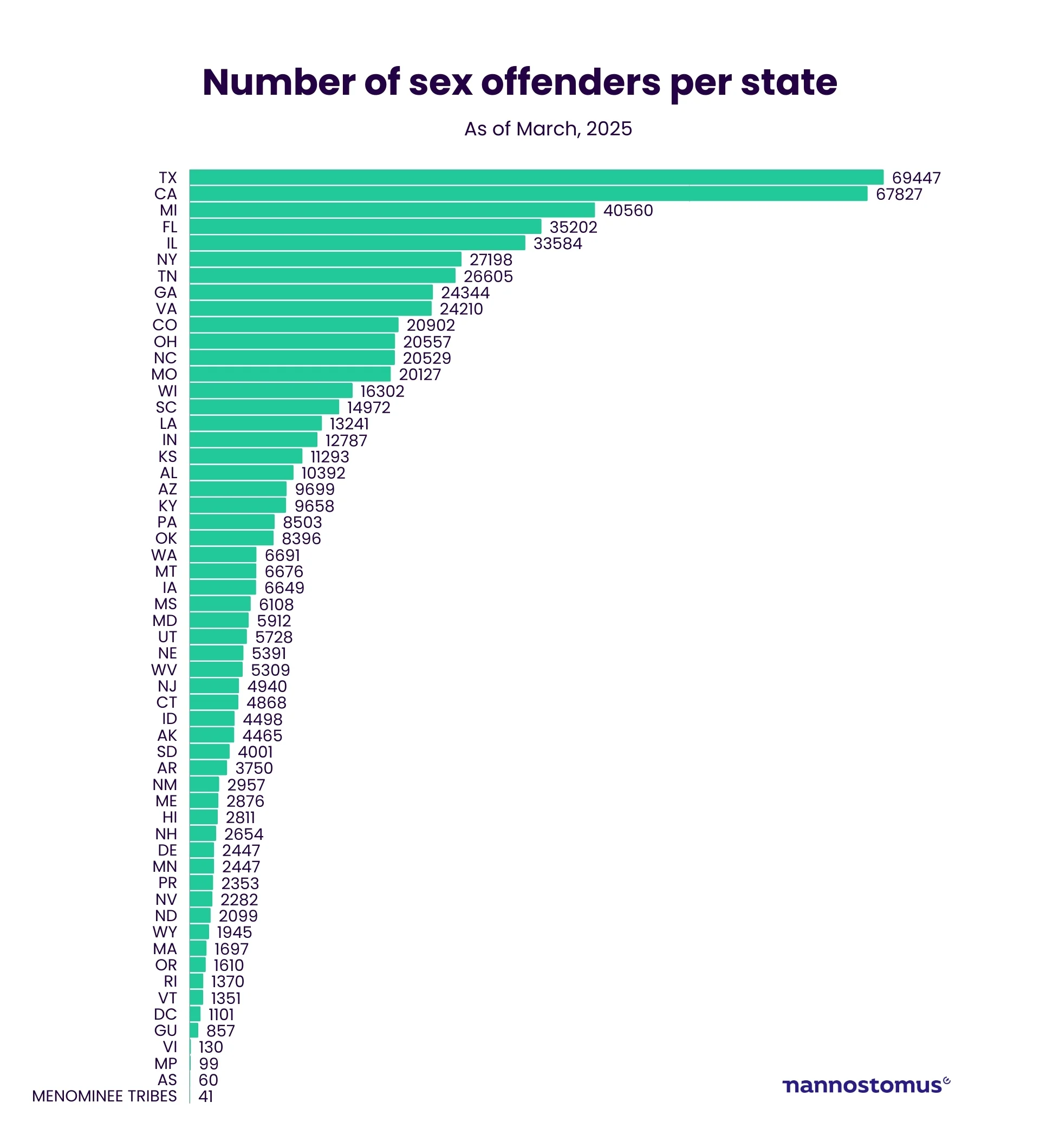
Sexual offenses vary. Indecency with a child by contact makes up over 22% of all cases. Aggravated sexual assault of a child follows at nearly 17%, and sexual assault of a child accounts for approximately 13%. Other common offenses include sexual assault, possession of child pornography, and indecency with a child by exposure. Although less common, online solicitation of minors and the promotion of child pornography remain significant concerns for community safety. Not all sex offenders are seen as the same threat. Most states use three levels to describe how likely someone is to reoffend.
- Level 1 is the lowest. These offenders are considered less likely to commit another offense. They make up about 14% of all registered offenders.
- Level 2 sits in the middle. These offenders pose a moderate risk. Maybe they’ve offended more than once or their crime involved grooming or planning. Roughly 39% of offenders fall into this group.
- Level 3 is the highest. These individuals are seen as high risk. Many have a history of repeat offenses or violent behavior. Nearly half—47%—are classified as Level 3. That’s a big number. These are the people communities should know about.

Not everyone is locked up. Not everyone is being watched. And not everyone is where they’re supposed to be. Let’s look at the numbers.
- About 34% are marked as “Active”. That means they’re currently living in the community, checking in (usually), and listed on a registry.
- 20% are “Compliant.” They’re following the rules, reporting on time, and keeping their info up to date.
- A small percentage—just over 1%—are “Non-Compliant.” These folks are breaking the rules. Maybe they moved and didn’t say where. Maybe they just stopped checking in.
- Some have been released but are still required to register—that’s about 12%.
- Then we’ve got the 11% who are incarcerated, and around 9% who are just listed as “Registered.”
- About 1.25% are listed as “Absconded” and “Whereabouts Unknown.” That means they’ve taken off. Authorities don’t know where they are.
- Other statuses include deported, civilly committed, transient, or even just “pending.”
Despite the widespread implementation of residential restrictions for sex offenders, this research casts doubt on their effectiveness. A Minnesota Department of Corrections study analyzed 224 repeat offenders and found that none would likely have been deterred by residency restrictions. Most victims were family members or connected through social relationships, with fewer than 30 offenders establishing contact within a mile of their homes. Further studies from Minnesota, Arkansas, and Colorado support these findings.
Sex crimes affect both females and males, though females experience higher reported rates. As you may have noticed, there is a large number of unspecified reports. It means that there is a gap in reporting. Enhancing awareness can help your community better understand risks and implement more targeted protective measures.
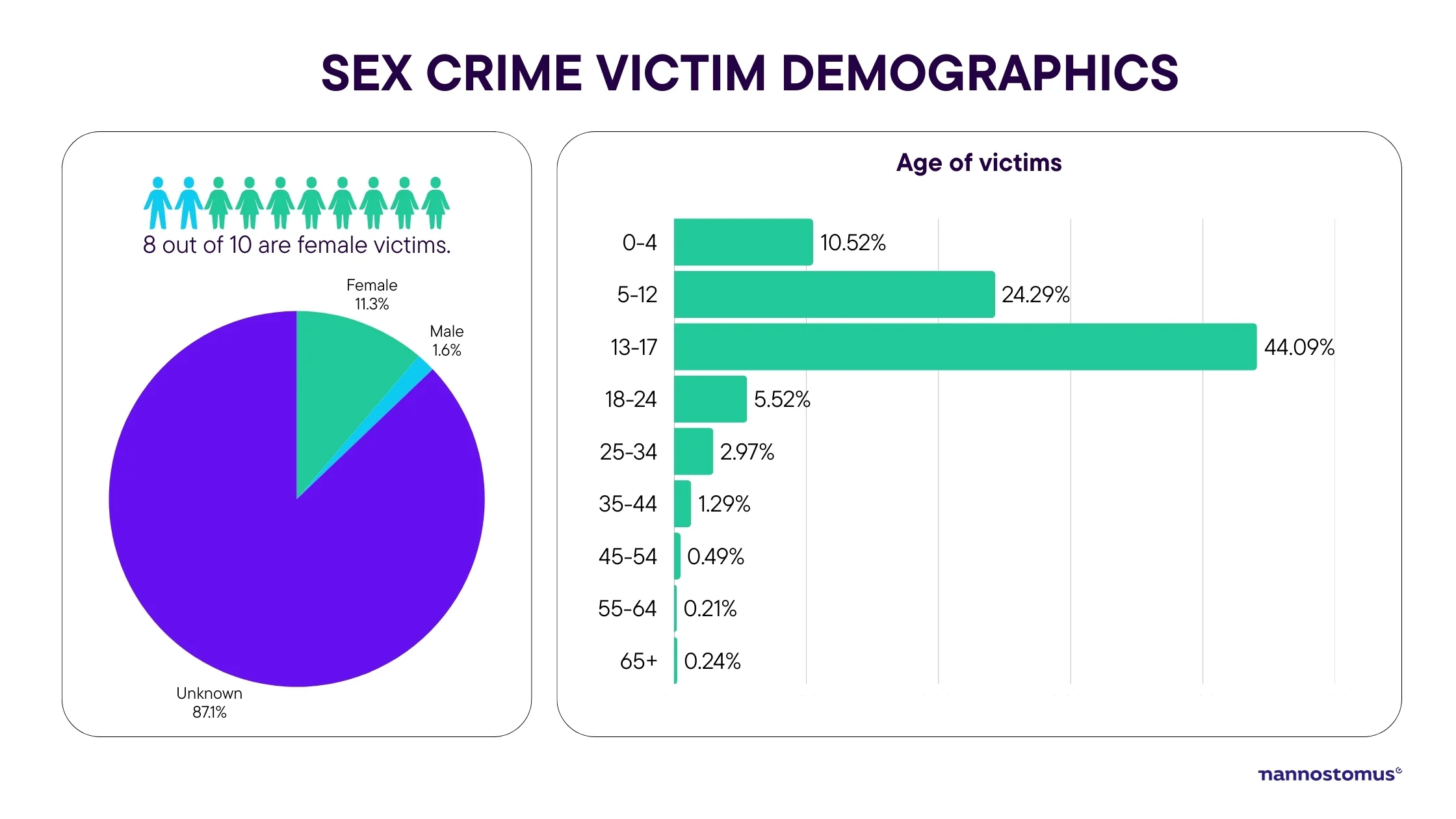
A majority of child victims are between the ages of 13 and 17. Specifically, 35% of victims of sexual assault and rape are under age 12, while 44% are aged 13 to 17. The single age with the highest proportion (10.76%) of sexual assault victims reported to law enforcement is 14.
Thus, prevention efforts should focus on this demographic. Educational programs in schools should raise awareness about consent and personal boundaries. Additionally, creating safe avenues for reporting and providing accessible support services can aid in addressing and reducing these incidents.
The Risks of Failing to Locate Sex Offenders in Your Neighborhood
Let’s look at some real-life cases that show why the ability to locate sex offenders in your area is important.
In 2017, Ohio State University student Reagan Tokes was abducted, raped, and murdered by Brian Golsby, a recently released sex offender. Despite wearing a GPS monitor, Golsby committed multiple robberies before the murder. Authorities failed to monitor his movements, allowing these crimes to occur. This tragedy led to the Reagan Tokes Act, aiming to improve monitoring of offenders.
In 1991, 11-year-old Jaycee Dugard was kidnapped in California by Phillip Garrido, a convicted rapist. Despite being on the sex offender registry, Garrido held Dugard captive for 18 years. Authorities missed multiple opportunities to discover her due to inadequate monitoring and communication.
Failing to locate sex offenders near me affects real people and entire communities. Families, schools, and neighborhoods lose their sense of security. Fear spreads. Trust in law enforcement weakens. And worst of all, preventable tragedies keep happening.
The Role of Community in Sexual Crime Prevention
You don’t need to wait for someone else to step in. Communities that act—schools, neighborhoods, local governments—can change the outcome. And many already have.
Let’s look at what works.
In Midland County, the local rape crisis center launched a care coordination unit for child sex trafficking cases. They pulled in law enforcement, health professionals, victim advocates—everyone. Survivors got therapy, court support, and someone who picked up the phone.
In Flint, Michigan, people got tired of waiting for change. They turned abandoned lots into clean, green spaces. Mowed the grass. Planted flowers. Turns out, when streets look cared for, predators stay away. Over five years, violent crime—including sexual assaults—dropped by 40%.
So, you don’t need a national mandate to create safer spaces. You just need people willing to act.
How to Locate Sex Offenders in Your Area
Sex offender registries are managed state by state, with different formats, rules, and update schedules.
This means if you want a complete picture, you’ll need to search each state’s registry separately.
Of course, there is a National Sex Offender Public Website (NSOPW). You can also go to sheriff’s and police departments to learn how to locate registered sex offenders or monitor this information in community groups or forums.
Nannostomus offers one more option — locate sex offenders free using our API.
How the Free Sex Offender API Helps Find Sex Offenders Location
Instead of wasting hours navigating 50 different registries, get accurate, updated data in a single place.
Instant Results – Free to Use
With just a name and state, you can instantly check for registered sex offenders—right from our website. No need to dig through multiple state registries. No endless clicking and loading screens. Just type, search, and get results.

While the free version provides limited details, it still covers the essentials—enough for community leaders, landlords, and concerned parents to stay informed.
Up-to-Date Data from Official Sources
Our API pulls fresh data every month from publicly available sources. This means you’re always getting the latest offender information—no more worrying about missing critical updates.
Easy Integration for Websites & Community Platforms
For organizations that need more than just occasional checks, the API offers integration into websites, apps, and community safety platforms. Whether you’re a neighborhood watch group, a school district, or a local government, you can automate offender tracking and keep your community safe without the manual hassle.
Here is a sample of Nannostomus sex offender API output:
"Offenders": [
{
"Fullname": "SMITH,JOHN JAMES",
"Firstname": "JOHN",
"Lastname": "SMITH",
"Middlename": "JAMES",
"Sex": "Male",
"Address": "2600 S SUNSET AVE, LITTLEFIELD TX 79339",
"AddressDate": "20230114",
"BirthDate": "19530117",
"Ethnicity": "Non-Hispanic",
"EyeColor": "BLUE",
"HairColor": "BLOND OR STRAWBERRY",
"Height": "6'2\"",
"Skin": "White",
"Weight": "216 LBS",
"Registered": "20121203",
"Risk": "C - CIVIL COMMITMENT",
"SourceState": "TX",
"OffenderLink": "https://publicsite.dps.texas.gov/SexOffenderRegistry/Search/Rapsheet/GetRapsheetXml?sid=03769262",
"SourceId": "03769262",
"Age": 71,
"Aliases": [
"SMITH,JOHN",
"SMITH,JOHN JAMES JR",
"SMITH,SMITTY",
"SMITTY,XX"
],
"Crimes": [
{
"Court": "5Y DISCHARGED FROM PAROLE/MANDATORY SUPERVISION",
"ConvictionDate": "20080213",
"Statute": "TEXAS PENAL CODE 22.021(a)(1)(B)",
"Description": "AGGRAVATED SEXUAL ASSAULT OF A CHILD",
"VictimAge": 7,
"VictimSex": "Female"
}
]
}
]
You can test our sex offender API for free using a test key to explore its functionality before full integration. Check out our API documentation for usage guidelines.
Conclusion
Sex offenders live in every state. Some move in without anyone noticing. And sometimes, the price of not knowing is way too high.
But here’s the good news—now you’ve got tools.
Use the free Sex Offender API. Run a quick search. Know who’s living nearby.
Need more data? Grab the full access to the data and make it part of your community’s safety plan.
Talk to your school. Your town. Your neighbors. Because awareness is step one. Action is next.
So, take it.
